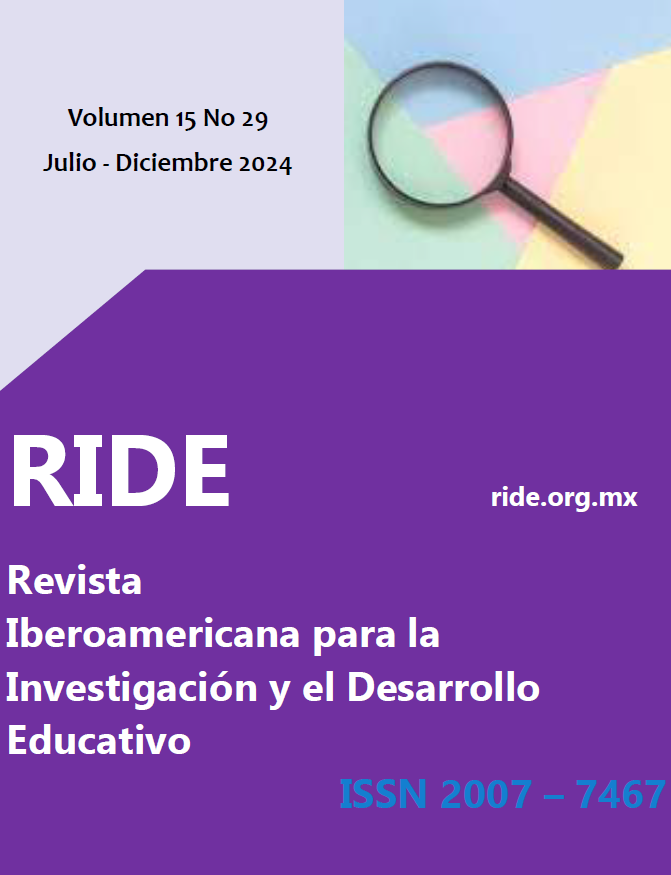Territorial planning through the detection of boundary markers north of Mexico City
Abstract
At the beginning of Mexico City (CDMX), its territorial configuration was delimited by natural physical elements or by boundary marking through boundary markers, which are stone monoliths. With population growth, people settled in the limits of CDMX, modifying the territorial configuration planned at the beginning. On the other hand, there are political factors such as the configuration of the electoral districts that generated another new limit, this brought serious problems to the population since a duality arose in its delimitation and territorial definition, (on the one hand, being from CDMX and by another from the State of Mexico). The hypothetical assumption was that the lack of clarity in the territorial delimitation of some communities and the formation of electoral districts by the National Electoral Institute (INE) generated a double political division. The objective of this work was to identify the importance of the application of urban planning and a clear territorial delimitation, through the detection of boundary markers. In addition to pointing out the impact caused in the studied community, as well as some conditions that had a direct impact. This research is mixed (quantitative-qualitative). On the one hand, the identification of the territorial limits defined in the “CDMX Territory Law” was carried out through the location of the boundary markers, contrasting with the limits of the electoral roll cartography. of the INE, showing a territorial duality, as indicated in the hypothesis. Once the difference was found, some very negative consequences could be shown for the population studied. It was detected that the properties affected by this duality present specific problems by not having basic services, as well as identity, being in the limits of a mayor's office and a municipality at the state level.
Downloads
References
Alonso-Velasco, I. (B) (2020). Percepción poblacional de una disputa por límites territoriales entre las entidades federativas mexicanas de Campeche y Quintana Roo. Perspectiva Geográfica, 123-144.
Cámara de Diputados del H. Congreso de la Unión. (2018). Ley de Planeación. Cámara de Diputados. https://www.diputados.gob.mx/LeyesBiblio/pdf/59_160218.pdf
Consejo Nacional de Evaluación de la Política de Desarrollo Social (Coneval) (2019). Medición de la pobreza 2008-2018. CDMX: CONEVAL. https://www.coneval.org.mx
Duarte, M. C. (2021). Estas son las quince ciudades más pobladas del mundo en 2021. National Geographic. https://viajes.nationalgeographic.com.es/lifestyle/estas-son-quince-ciudades-mas-pobladas-mundo-2021_17453
Escallón-Gartner, C. y Pava-Gómez, A. J. (2019). Planeación y gestión espontánea en Bogotá. Informalidad urbana, 1940-2019. Bitácora 30(1), s/p. DOI: https://doi.org/10.15446/bitacora.v30n1.82586
Escamilla-Herrera, I. (1992). Papel de la división político-administrativo de México en la ordenación del territorio. Instituto de Geografía
Farinós-Dasí, J. (2008). Gobernanza territorial para el desarrollo sostenible: estado de la Cuestión y agenda. Boletín de la A.G.E, 11-32.
Fiscalía Nacional de Seguridad Pública. (2020). Encuesta Nacional de Seguridad Pública Urbana [Ensu]. https://www.fgjcdmx.gob.mx/
Gobierno de la Ciudad de México. (2020). Ley del Territorio de la Ciudad de México. https://data.consejeria.cdmx.gob.mx/images/leyes/leyes/LEY_DEL_TERRITORIO_DE_LA_CIUDAD_DE_MEXICO_1.pdf
Hernández, J. L. (2010). Intensidad Geomórfica del Relieve Noroeste del Estado de Chiapas, México: Un enfoque para la Planeación Territorial. C. y G., 79-98.
Hernandez-Sampieri, R., Fernández-Collado, C. y Baptista-Lucio, M. (2006). Metodología de la investigación. México DF: McGraw Hill.
Instituto Nacional de Estadística y Geografía (Inegi) (A). (2020). Cuéntame de México. https://cuentame.inegi.org.mx/
Instituto Nacional de Estadística y Geografía (Inegi) (B). (2020). Encuesta Nacional de Ingresos y Gastos de los Hogares (Enigh). https://www.inegi.org.mx/programas/enigh/nc/2020/#Microdatos
Instituto Nacional de Estadística y Geografía (Inegi) (2021). Encuesta Nacional de Ingresos y Gastos de los Hogares (Enigh.2020).
Landrada. (20 de 06 de 2024). Topógrafos, mojoneras y terrenos, Landrada. Landrada, blog: https://blog.landrada.mx/articulo/topografos-mojoneras-y-terrenos-transformacion-del-entorno-con-conciencia
Navarrete-Escobedo, D. (2013). Formas y conceptos de la urbanización planetaria para una lectura de la ciudad latinoamericana. Andamios, 69-90.
Robles-Baldenegro, M. y Moreno-Murrieta, R. (2020), Nodos y mojoneras: una exploración de los trayectos del centro urbano de la ciudad. Academia Journals y el Tecnológico Nacional de México.
Sanabria-Artunduaga, T. H. y Ramírez-Ríos, J.F. (2017). Ciudad Compacta vs. Ciudad Difusa. Ecos antiguos y recientes para las políticas de planeación territorial y espacial. Cuaderno Urbano. Espacio, Cultura, Sociedad, 22(22) 29-52. http://www.redalyc.org/articulo.oa?id=369251998002
Sgori, A. (2016). Morfología urbana. Universidad Nacional de la Plata, 1-19.
Valinarq. (03 de enero de 2023). Imagen Urbana, elementos que componen la imagen urbana Valinarq, Editor. de https://www.youtube.com
Zoido-Naranjo, F. (1991). Geografía y Ordenación del Territorio. Scripta Vetera, 19-31.
Zapata-Barrero, R. (2012), Teoría Política de la Frontera de la movilidad humana, Revista Española de Ciencia Política (29), pp. 39-66.

This work is licensed under a Creative Commons Attribution 4.0 International License.
In order to promote the development and dissemination of research in education in Latin America, the Ibero-American Journal for Educational Research and Development (RIDE) adhered to the Budapest Open Access Initiative, which is why it is identified as a Open access publication. This means that any user can read the complete text of the articles, print them, download them, copy them, link them, distribute them and use the contents for other purposes. Creative Cummons licenses allow users to specify the rights to use an open access journal available on the Internet in such a way that users know the rules of publication. Authors who publish in this journal accept the following conditions: Authors they keep the author's rights and give the magazine the right of the first publication, with the work registered with the attribution license of Creative Commons, which allows third parties to use the published material whenever they mention the authorship of the work and the first publication in this The authors can make other independent and additional contractual agreements for the non-exclusive distribution of the version of the article published in this journal (eg, include it in an institutional repository or publish it in a book) as long as they clearly indicate that The work was published for the first time in this magazine. Authors are allowed and recommended to publish their work. low on the Internet (for example on institutional or personal pages) before and during the review and publication process, as it can lead to productive exchanges and to a greater and faster dissemination of the published work















